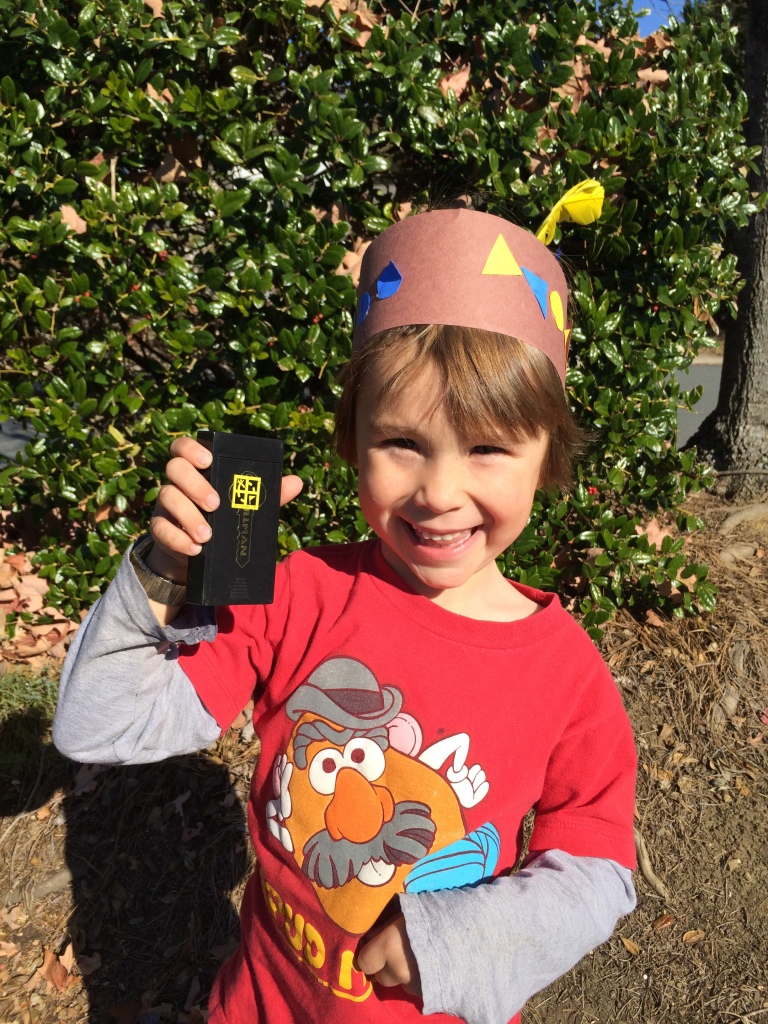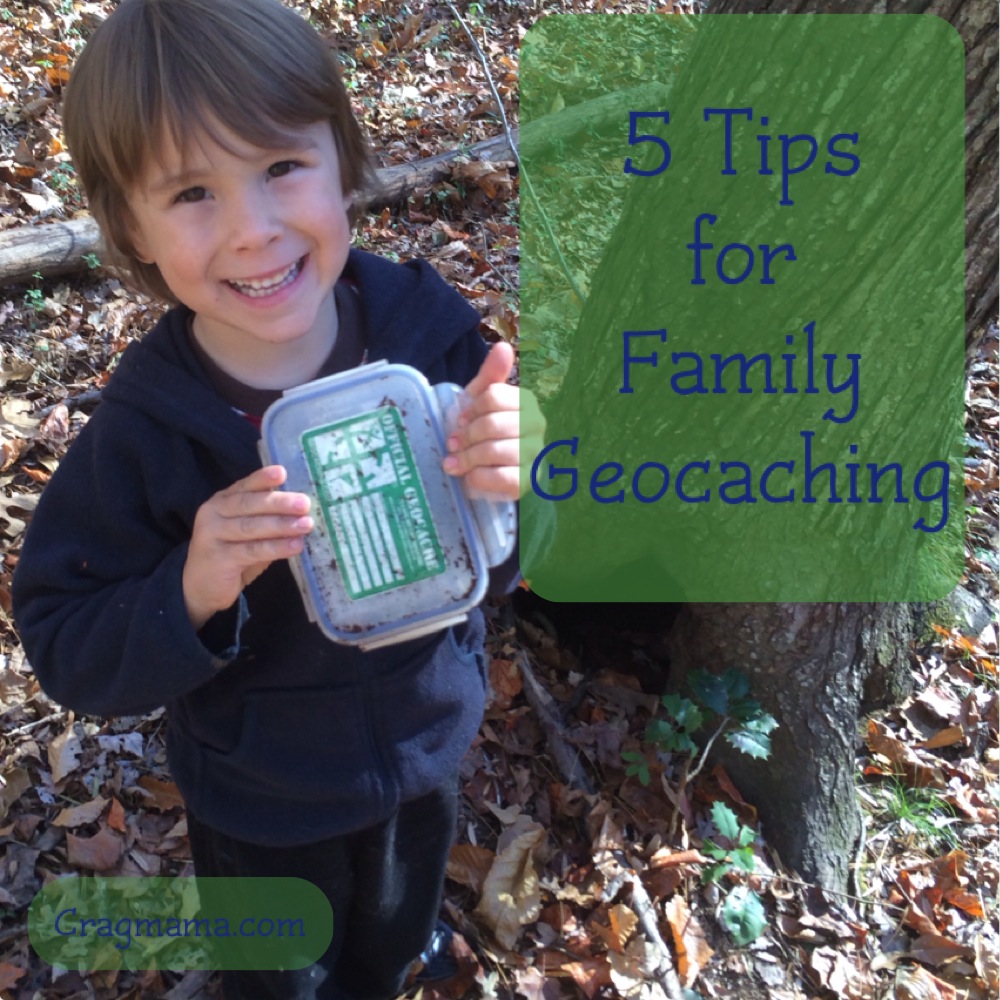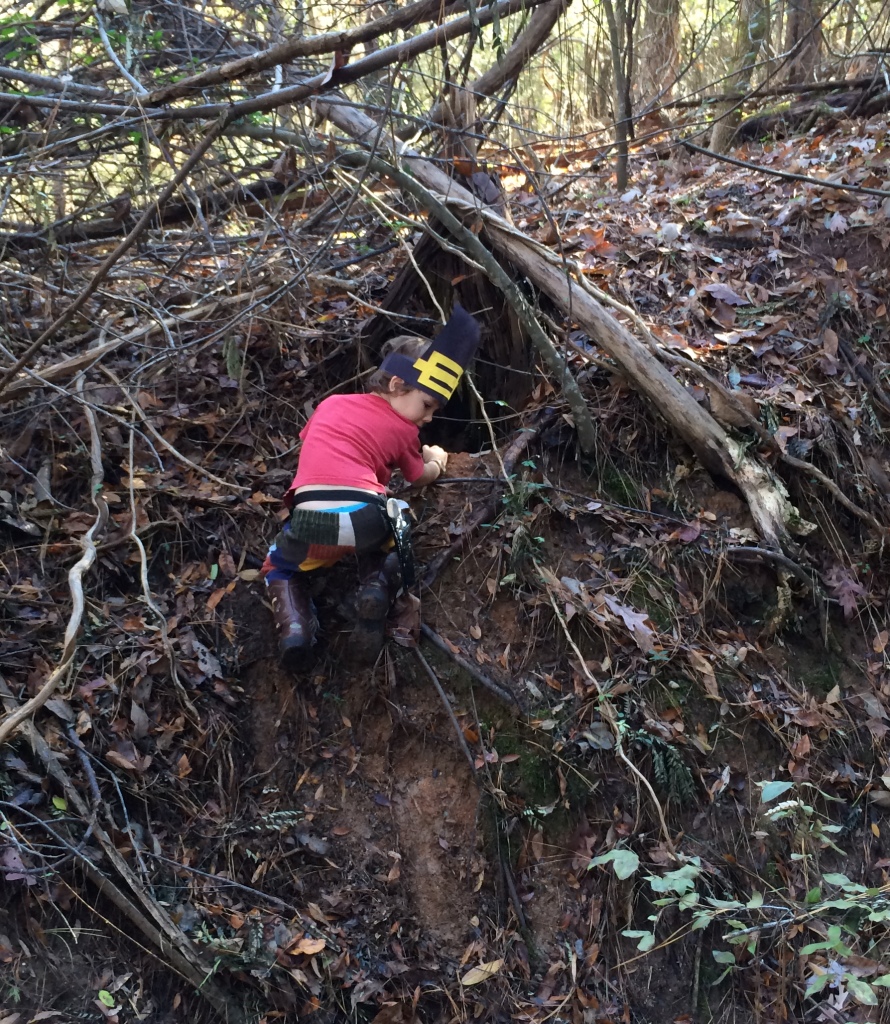5 Tips for Family Geocaching
Recently our family has adopted a new outdoor hobby (because you can NEVER have to many, right?) While I wish I could say it involved snow, it’s something that can be enjoyed with nothing but a smart phone and some enthusiastic explorers – geocaching! For those of you that may not be familiar with the term, geocaching is basically a real-life treasure hunting game, played outdoors with the use of GPS. Lately my oldest explorer has really been into searching (and finding!) type games – everything from traditional hide and seek to random, “easter egg hunt” type activities. One day it dawned on me that geocaching would be perfect for him. And after a quick browse through the app store, I found myself looking at a map of hundreds of caches throughout our city! (For those of you who have more questions about what exactly geocaching is or how to get started, check the Geocaching 101 page from the official geocaching website.)
In addition to simply enjoying the outdoors together as a family, geocaching is a wonderful way to encourage curiosity and imaginative play in your children. (We usually pretend we are on treasure hunts while searching for caches.) And while we ordinarily try to keep technology OUT of our outdoor escapades, geocaching offers great teachable moments about directional skills, map reading, and how to use GPS/compasses. (Big C LOVES watching our “blue dot” get closer and closer to the treasure box on the screen, and he has learned how to use the compass feature on the app well enough that he can do most of the navigating himself.)
Sound fun? It sure is! But before you get started, consider these tips to get the most out of your experience.
CHOOSE AN APPROPRIATE CACHE.
Not all caches are created equal. Start with a “traditional” cache, meaning a container located at specific GPS coordinates (In fact, that’s the only kind we ever do…for other types of caches, see here.) Each cache has 2 ratings, difficulty and terrain, both measured on a scale of 1-5 (1 being easiest). The difficulty rating shows how hard the cache is to find once you are at the coordinates, and the terrain rating shows how difficult it is to get to the coordinates. Factor both of those ratings in as you decide what cache is best for your family. So far our hardest difficulty has been 1.5, and our hardest terrain has been 2 (which basically meant a quarter mile walk in the woods along a well-maintained path.)
CHECK THE RECENT LOGS.
The logbook will show how much recent “action” a particular cache has received. This is helpful because sometimes caches go missing, either from natural causes or “muggles” (geocaching lingo for non-geocachers that may inadvertently stumble upon a cache.) If the log shows that someone has recently found the cache, odds are high that it’s still there. However, if the last time it was found was a year ago, and/or there are a lot of “DNF’s” (did not find) recorded, it’s probably better to choose a different cache, especially if you’ve got small kiddos that would be very disappointed to walk away empty-handed (ask me how I know…sigh.)
LET THE KIDDOS FIND THE CACHE.
Once you reach the coordinates, (known as “ground zero,” or “GZ” in caching lingo), it’s time to start searching for your cache. It could be hiding just about anywhere – high, low, in something, under something, they are all different! And since there will always be a variant in the accuracy of your GPS device (and also the hider’s!), you will sometimes end up with a fairly large area in which to search. This is the most rewarding part of the activity, so let them search til their heart’s content. Meanwhile you should probably try to find it as well – that way if you start running out of time, or your kids start getting discouraged, you can steer them in the right direction and/or offer hints. Confession time. On one of our first caching adventures, I was so excited to spot that little plastic box hiding in a hole at the base of a tree that I shouted out, “There it is!” within seconds of reaching the coordinates. Big C didn’t seem to care, but when he found the next one all by himself, he was SO proud of himself, and I felt bad for accidentally snatching that opportunity from him with my over-enthusiasm!
BRING YOUR OWN TREASURES.
You never know what you’re going to find when you open up a cache, as the contents are solely dependent on the cache owner AND previous visitors to the cache. But unless the cache you are looking for is listed as “extra small” (or micro-cache), it will probably contain a few goodies, which our family refers to as treasures. These “treasures” are generally not worth much, and often times grown-up geocachers pay no attention to them and head straight for the logbook, which every cache should have (and every visitor should sign, so have a pen handy in case there’s not one in there!) But young geo-cachers usually like to leave no part of the cache unexplored – I know my son will analyze every little thing in there! The fun part is that you can take what you like, although common courtesy states that if you take something you should also leave something of equal or greater value, so make sure you bring along a few small trinkets to make a trade (we like stickers, lollipops, and little plastic toys.)
PLAN ACCORDINGLY.
How much time you have allotted for geocaching adventures may dictate what types of caches you search for. For example, if we’ve got an hour or so, we might go to a park that contains multiple caches within walking distance. If we are just out and about running errands, we might settle for a quick “park and grab” (“PNG” in geocache jargon), near one of our stops (shopping centers are common places for urban caches to be lurking!) Geocaching is a great way to sprinkle in some outdoor time into a busy day!
With only 13 caches under our belts, we are by no means experts at this. But we’ve got the basics down, and Big C has tasted victory enough to know that he’s hooked (and that it was worth it for us to shell out the $9.99 for the premium version of the Geocaching app!)
If you’re intrigued and want to give it a try, check out the getting started section of the Geocaching website. And if you’re a seasoned veteran, please feel free to leave your own tips and tricks of the trade!





2 Responses to “5 Tips for Family Geocaching”
Geocaching was on my bucket list for things to try this year and we still haven’t gotten around to it! I downloaded the free app to my phone but that’s it. This made me motivated, though! I know my girls would love it.
My 8 year old granddaughter and I have been geocaching for 3 years. We love hiking and the outdoors. Geocaching goes right along with those.